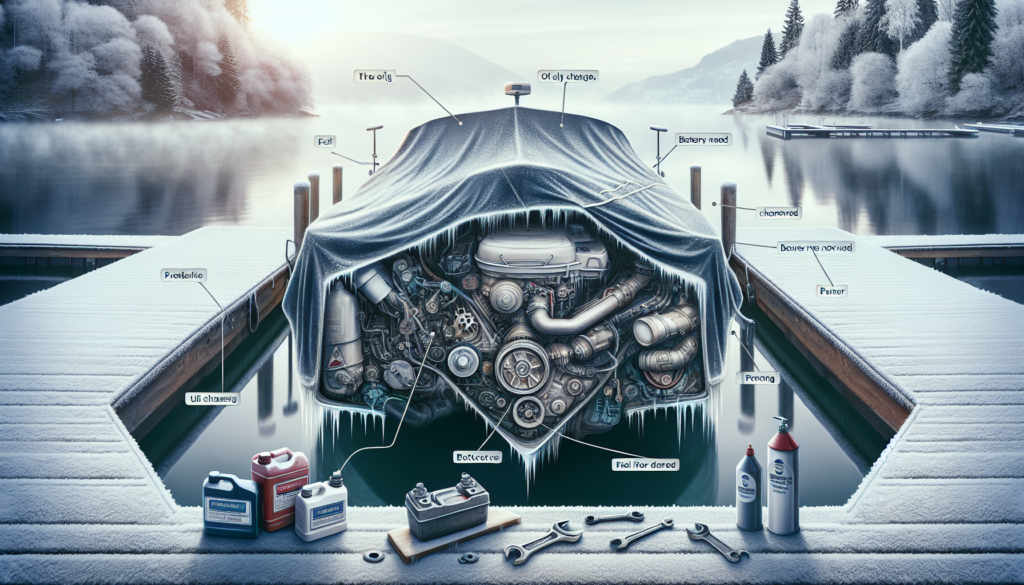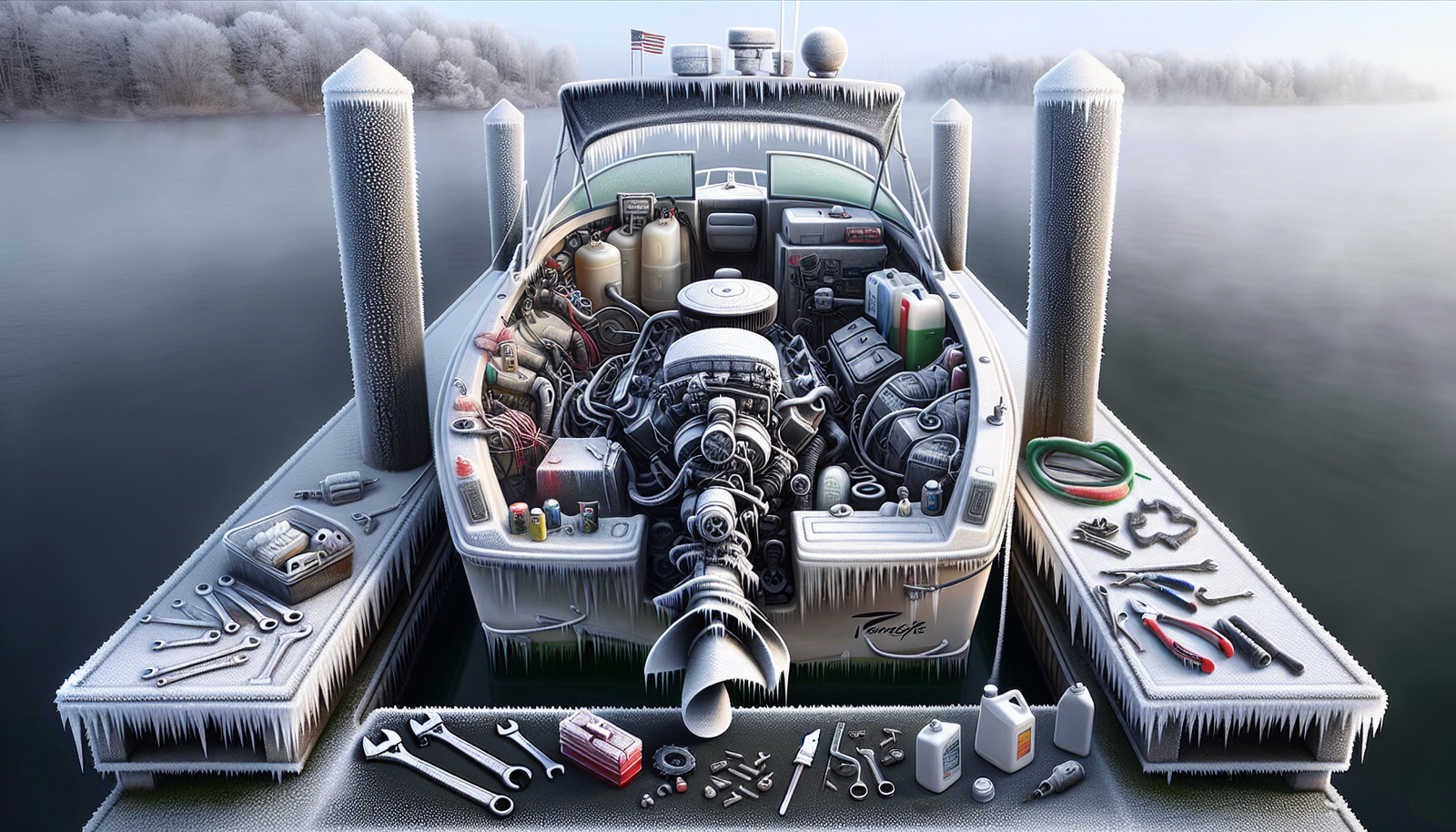Winter is fast approaching and, as a boat owner, it is time to start thinking about how to prepare your engine for the chilly months ahead. The article “The Best Ways To Winterize Your Boat Engine For Cold Weather Storage” provides practical, step-by-step guidelines and expert tips that will help safeguard your boat’s powerhouse during the colder periods. The correct winterization process extends the longevity of your engine, reduces future repair costs, and ensures your boat is ready for seamless spring starts. So, prepare your boat for the winter hibernation with the information contained in these pages; your boat engine will thank you for it.

Understanding the Importance of Winterizing Your Boat Engine
Winterizing your boat engine is not just a recommendation but a necessity to ensure its longevity and optimal function. It requires time and effort but is ultimately an investment that pays off when warmer weather rolls around again.
Why Winterize Your Boat Engine
You might be wondering, why should you go to the trouble of winterizing your boat engine? The primary reason is to protect your engine from freezing temperatures which can cause major damage. Frost can form inside the engine, leading to corrosion and breaking of parts. Moreover, winterizing your engine also keeps it clean, reducing potential damage from grime build-up.
Potential Risks of Not Winterizing Your Boat Engine
Failure to winterize your boat engine can lead to costly repairs come springtime. Without the right care, your engine components—notably water pumps, manifolds, blocks, and outdrive—might freeze and crack due to water expansion inside. The risk of fuel contamination may also increase which could lead to a decrease in your engine’s performance. So, you see, winterizing your boat not only makes practical sense but economic sense too.
Preparing Your Boat for Winterization
Before diving into the winterization process, there are preliminary steps that you need to take to prepare your boat properly.
Checking for Any Existing Damage or Issues
Before winterizing, do a thorough check of your boat and engine for any existing damage. Look for cracks, rust, leaks, and other signs of wear and tear. Ignoring existing issues before winter could worsen them, leading to larger complications in the future.
Cleaning the Boat and the Engine
Any dirt, salt, or grime that has accumulated over the boating season should be thoroughly cleaned off your boat and engine. Left unattended, these can encourage corrosion, staining, and odors. Washing and waxing your boat and cleaning your engine can go a long way in preserving its structure and performance.
Gathering Necessary Tools and Materials
Next is gathering all the tools and materials you’ll need for the winterization process. This may include antifreeze, a boat cover, moisture absorbers, stabilizers, lubricants, a battery charger, and more.
Step by Step Winterization Process
With your boat cleaned and prepped, the next phase involves the technical aspects of winterizing your boat’s engine.
Drain and Flush the Engine
First, drain the engine of any residual water to prevent freezing and cracking. Once it’s drained, flush the entire cooling system to remove any remaining salt, dirt, or sediment.
Apply Antifreeze
Next, use a quality marine antifreeze throughout the engine block, manifolds, and lines. This will provide a protective shield from freezing temperatures and inhibits corrosion.
Lubricate the Engine
Keep the parts of your engine well-lubricated to prevent dry, cracking seals. Lubricate the cylinders through the spark plug holes, tilt tube, and carburetor linkages.
Fog the Engine
Fogging the engine with a specialized oil offers a layer of protection that coats internal components, keeping them free from rust and corrosion that could onset during storage.

Dealing with Fuel System
The fuel system also needs attention during winterization to avoid potential degradation and damage.
Removing or Stabilizing the Fuel
If your boat’s fuel system can be completely drained, it’s best to do so to avoid fuel turning stale. If not, using a fuel stabilizer mixed in with a fresh load of fuel can keep it from breaking down during hibernation.
Cleaning the Fuel System
After managing the fuel, make sure you clean the rest of the fuel system. Remove any dirt or debris present and replace fuel filters where required.
Adding Fuel Stabilizer and Running the Engine
Add a fuel stabilizer to the remaining fuel and run your engine for about 15 minutes to circulate the stabilizer throughout the system.
Caring for the Bilge
The bilge area, often overlooked, needs care to prevent damage over time.
Cleaning the Bilg
To help prevent damage from liquid sitting in the bilge area, give it a good cleaning. Remove all debris and wash it out before drying it completely.
Ensuring the Bilge Pump Works Properly
Check your bilge pump operation to ensure it’s working properly. A faulty pump that doesn’t remove water properly could cause freezing and cracking in cold temperatures.
Adding Antifreeze to the Bilge
Lastly, add antifreeze to the bilge to protect pumps and other components from freezing.
Inspecting and Maintaining the Battery
The battery needs special care to prevent weakening over winter months.
Disconnect and Remove the Battery
Disconnect your boat’s battery and remove it from the watercraft altogether. This can prevent accidental power drains and protect your battery from freezing temperatures.
Clean and Inspect the Battery
Once safely removed, clean your battery terminals with a specialized cleaner and inspect it for damage.
Charge and Store the Battery
Fully charge your battery and store it in a dry, temperature-controlled environment. Regularly check on it during the winter months and keep it charged.
Cleaning and Protecting the Cooling System
Your cooling system should also be thoroughly cleaned and protected.
Flushing the Cooling System
Flush the cooling system with fresh water and then with a marine antifreeze to ensure it’s free from any contaminants and protected against freezing.
Checking the Thermostat
Check your engine’s thermostat to verify it’s functioning properly and replace it if necessary.
Adding Antifreeze to the Cooling System
Finally, add a marine-grade antifreeze to your cooling system for added protection.
Protecting the Boat Exterior and Interior
The exterior and interior of your boat need attention too.
Properly Covering Your Boat
Use a high-quality, fit snugly cover to protect your boat from harsh weather, UV rays, and any debris.
Using Moisture Absorbers and Dehumidifiers
Deploy moisture absorbers and dehumidifiers to keep the boat’s interior dry and prevent mold, mildew, and corrosion.
Cleaning and Protecting Seats, Surfaces and Equipment
Protective sprays can help prevent cracking and fading of seats and surfaces. Also, remove all equipment that can be safely stored in a controlled environment.
Choosing the Right Storage Location
Where you choose to store your boat can make a significant impact on its condition by the time spring rolls around.
Choosing Between Indoor and Outdoor Storage
If possible, indoor storage in a temperature-controlled environment is optimal. However, if outdoor storage is your only option, ensure it’s covered properly to protect it from extreme weather conditions.
Preparing the Storage Area
Get your storage area ready for the boat. It should be clean, dry, free of pests and in a safe location.
Ensuring Your Boat is Secure in Storage
Once in storage, make sure your boat is secure. Tie it down and lock it up to deter theft or damage from winds.
Spring Preparation and Restarting Your Boat
the work doesn’t stop when spring comes around, as it’s important to prepare your boat for its return to the water.
Pre-check Before Using Boat Again
Before launching your boat, do a pre-check of all systems, including the engine, fuel system, battery, and other essential systems.
Reinstalling the Battery
Reinstall your boat’s battery, ensuring all connections are tight and secure.
Restarting Your Boat and Checking its Performance
Finally, start up your boat and allow the engine to run to check its performance. Look for any leaks and listen for any irregular sounds.
Remember, winterizing your boat engine might seem like an overwhelming job, but given the importance of the task, it’s worth your time and effort. By taking these measures, you’ll be able to keep your boat in top shape over those chilly months, ensuring that it’s ready to go when boating season resumes.


[…] efficiency, regular engine maintenance is crucial. Routine oil changes, regular filter replacement, proper fuel storage, and maintaining a clean engine are all factors that can significantly improve fuel […]
[…] maintenance includes things like winterizing your boat to protect it in colder months and spring fit-outs to get it back in shape for the boating season. […]